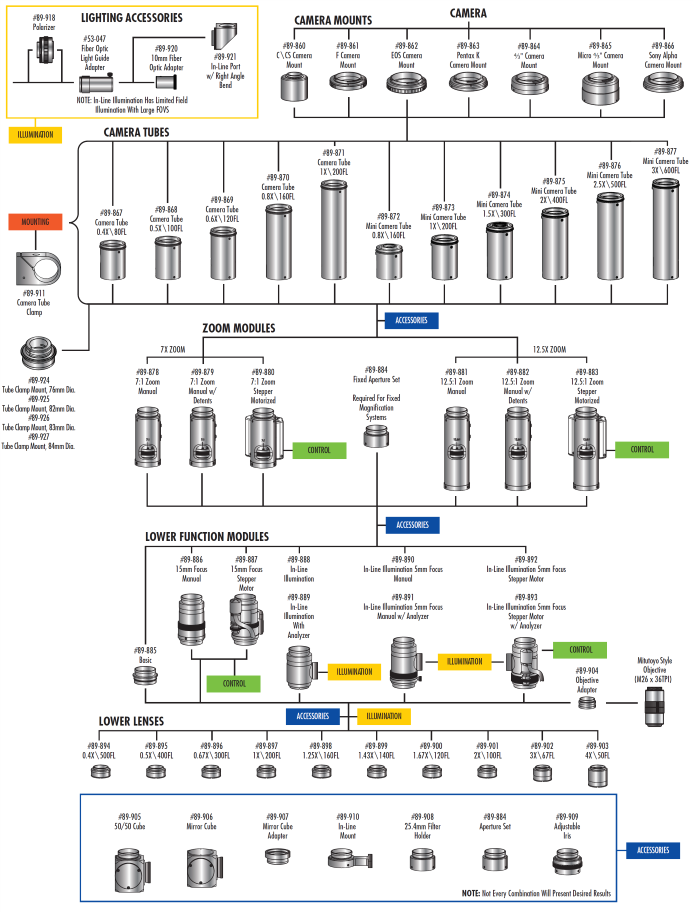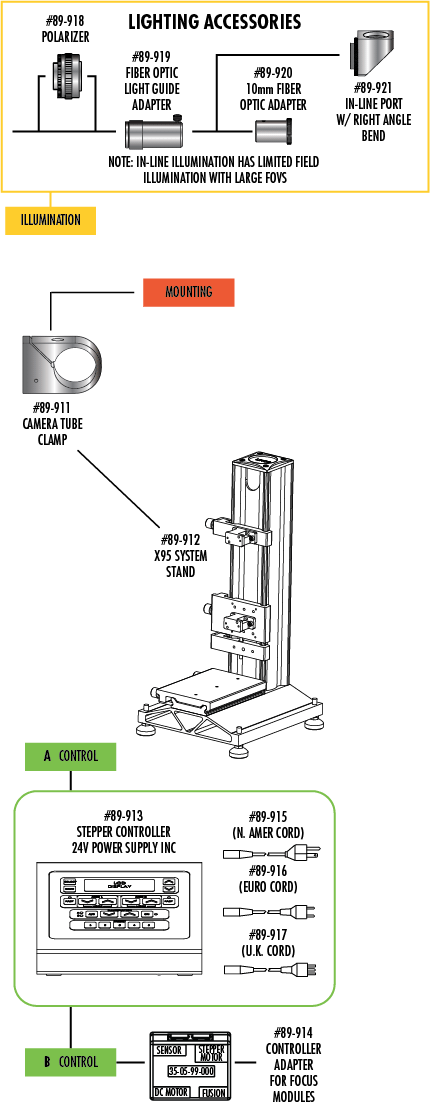무엇을 도와드릴까요?

7X and 12.5X High Precision Zoom Lenses는 camera mount, camera tube, core module, lower function module, lower lens로 구성된 모듈형 렌즈 시스템입니다. 모듈 교체를 통해 배율, FOV 또는 광경로를 변경할 수 있어 유용성이 매우 뛰어납니다. 7X and 12.5X High Precision Zoom Lenses는 M26 x 36 TPI Mitutoyo-style objective를 비롯해 C-Mount부터 F-Mount, 그리고 35mm DSLR 카메라에 이르기까지의 마운트 및 카메라 센서 커버리지와 호환이 가능합니다. 50/50 및 90° 큐브를 사용하면 직각 회전을 지원하거나 복수의 이미징 경로를 지원할 수 있습니다. 이 밖에도 multi-axis zoom 및 focus 기능을 위한 모터 컨트롤러를 사용할 수 있으며, USB, Ethernet이나 RS-232/422/285 포트에 연결할 수 있습니다.
완벽한 zoom lens 구성을 위해서는 camera mount, camera tube, zoom module, lower function module, lower lens가 필요합니다. 부품 선택 가이드는 제품자료 탭에서 확인할 수 있습니다.


혹은 지사별 연락처 확인
견적 도구
재고번호 입력 후 바로 시작
Copyright 2023, 에드몬드 옵틱스 코리아 사업자 등록번호: 110-81-74657 | 대표이사: 앙텍하우 | 통신판매업 신고번호: 제 2022-서울마포-0965호, 서울특별시 마포구 월드컵북로 21, 7층 (서교동 풍성빌딩)